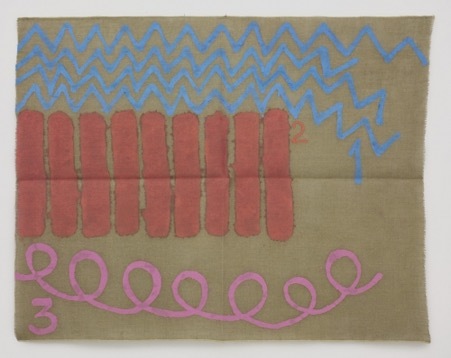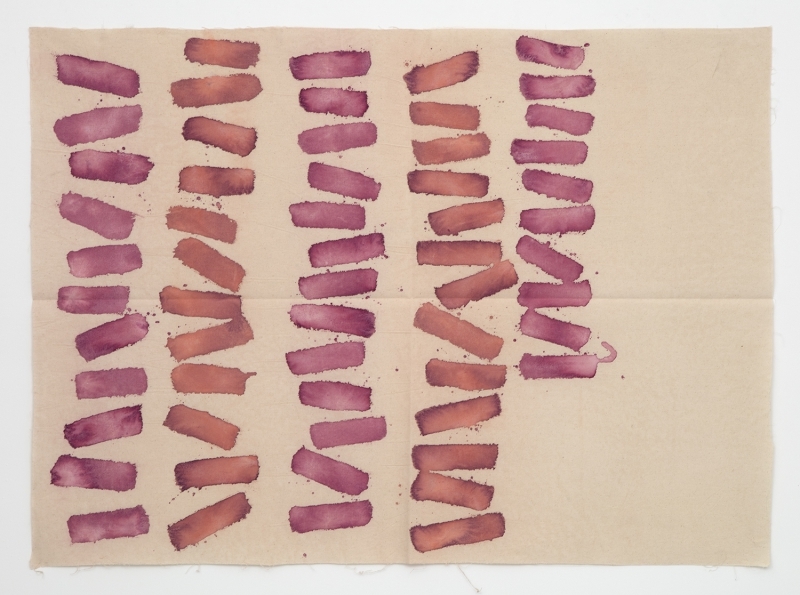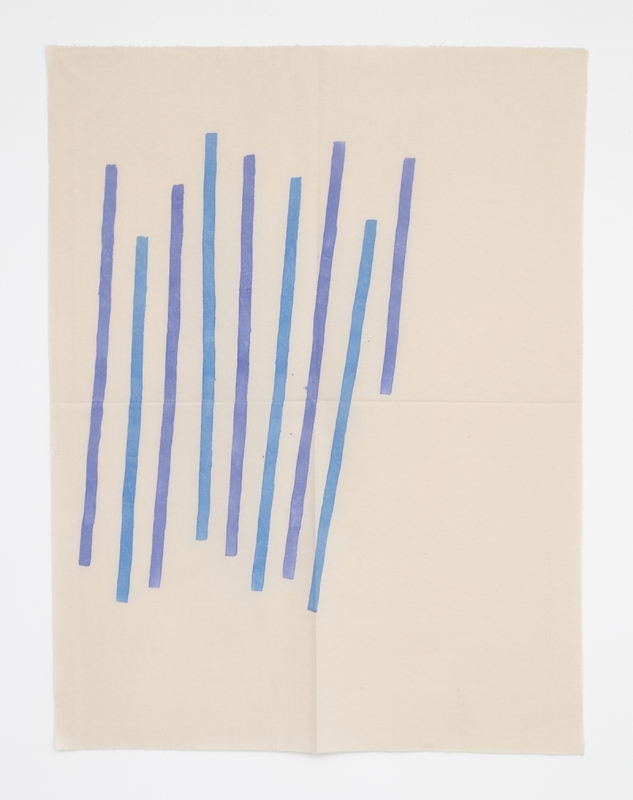Artist Spotlight: Giorgio Griffa
Born: 1936 in Turin, Italy.
Lives and works in: Turin, Italy.
Upcoming exhibition: Un Mondo Astratto Non-Bata, Genova Italy, Feb 26, – Apr 24, 2021.
Having just shown in Zurich at the Annemarie Verna Gallery at the end of 2020, Giorgio Griffa’s celebrated abstract paintings will soon be exhibited in Genova’s ABC-ARTE. Un Mondo Astratto Non-Basta (An abstract world is not enough) includes over forty of his historic works from the 1970s in line with his explorations of Arte Povera. It showcases his dedication to Analytical Painting and highlights the originality of his approach to painterly abstraction.

Tre colori (1998), image courtesy the artist and Casey Kaplan, New York.
Best known for painting upon raw, unstretched canvas, Griffa is closely linked with the radical Arte Povera (or “Poor Art”) movement. This movement, which began in Italy in the late 1960s, used materials rarely seen within the context of art galleries and museums in order to attack the values associated with institutions of government, industry and culture. Soil, rags and twigs, for example, were favoured over the traditional mediums of oil paint and carved marble. Griffa’s rhythmic, gestural paintings exaggerate the materiality of his canvas, whether linen, cotton, hemp or jute. His unconventional approach to painting prioritises tactility and the process over narrative and perspective, rebuking the traditional uses associated with the medium.

Verticale orizzontale (1978) image courtesy the artist and Casey Kaplan, New York.
His mark making is primordial and minimal, navigating a fine line between concentrated precision and impulsive freedom. Fascinated by modern scientific developments in the fields of quantum energy, time-space mathematics and the golden ratio, Griffa’s approach to image-making leaves his paintings in a state of flux, where ‘the painting is constant and never finished.’
Griffa’s earlier compositions with horizontal and vertical lines eventually gave way to the use of sponges, fingerprints and, in the 1990s, the depiction of numbers and lettering. His images have always, however, been seductive in their simplicity. Segni orizzontali, 1974, for example, captures the essence of the artist’s belief in the ‘intelligence of painting.’ The folded canvas, a signature of his practice, evokes the ‘memory of material,’ allowing the painting’s inherent characteristics – colour, surface and texture – to determine the aesthetic. The pleats can also be viewed as a way to satirise the notions of formulaic compositional structure in traditional painting and the seemingly incomplete repetition of dots exposes the finite frame of the canvas. With the absorption of acrylic paint into the jute plain to see, the act of painting is itself amplified. Painting is an inherently performative, time-based process and Griffa’s works continually reaffirm this.

Obliquo (1979), image courtesy the artist and Casey Kaplan, New York.
Many of art history’s canonical figures, including Henri Matisse, Mario Merz, Yves Klein, Paolo Uccello, Piero Dorazio, Brice Marden, Tintoretto and Joseph Beuys to name a few, are referenced in Griffa’s body of work. The expansiveness of Griffa’s subject matter complements his poetic visual language. His practice is ever-evolving, a living organism that refuses to surrender to convention.
Bio:
Giorgio Griffa (b. Turin, Italy 1936). In the 1960s he was an assistant to the Italian painter Filippo Scroppo. His artworks are in permanent public collections including the Tate Modern in London, Dallas Museum of Art, the Galleria d’Arte Moderna and the Museo d’Arte Contemporanea in Rome. Griffa’s work was also displayed at the Venice Biennale in 1970, 1980 and 2017. Now 81, Griffa lives and works in his hometown in Turin.
Author: George Greenhill
Cover image: Courtesy of Galleria Lorcan O’Neill Roma and the artist.
